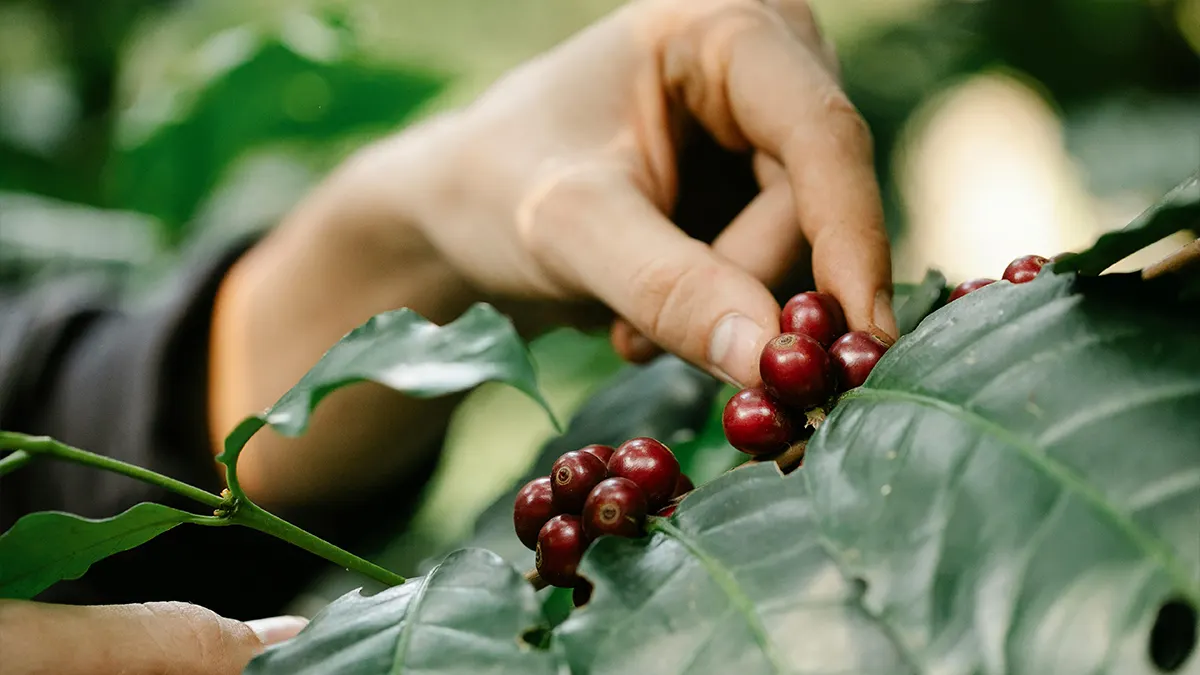How Many Cups of Coffee a Day Are Actually Good for You?
A Look At How Much Coffee Is A Healthy Amount And What Are The Health Benefits How Many Cups of…
This is a demo store for testing purposes — no orders shall be fulfilled. Dismiss
Skip to content
Coffee Varietals – Coffee’s richness and allure lie in its diversity—each sip tells a story influenced by the genetic makeup of the bean, the environment where it was grown, and the care taken during cultivation and processing. Coffee varietals, the distinct genetic lines of coffee plants, play a central role in shaping the flavours, aromas, and characteristics that coffee enthusiasts cherish. Let’s delve deep into the fascinating world of coffee varietals, exploring their history, development, and the unique traits they bring to the cup.
A coffee varietal represents a specific genetic strain of a coffee species. These varietals can occur naturally through mutation or hybridization or be created intentionally through cultivation and breeding programs. The two most commercially significant coffee species are:
Within these species, varietals are the unique “subsets” that differ in appearance, growth characteristics, and flavour profiles.
The story of coffee varietals begins with the wild Arabica plants of Ethiopia, the birthplace of coffee. These plants eventually spread to Yemen, where cultivation practices took root in the 15th century. From there, early varietals like Typica and Bourbon emerged as coffee expanded its reach to other parts of the world.
Typica is one of the oldest and most historically significant Arabica varietals. It is the genetic basis for many of the world’s coffee varietals. Known for its clean and sweet flavour profile, Typica was first cultivated in Yemen and later transported to Java, the Caribbean, and Latin America. While its susceptibility to diseases like coffee leaf rust poses challenges, its exceptional quality ensures its continued cultivation.
Bourbon, a natural mutation of Typica, was first cultivated on the island of Bourbon (now Réunion) in the Indian Ocean. It is renowned for its balanced sweetness, acidity, and body. Over time, Bourbon gave rise to several mutations and sub-varietals, such as Red Bourbon, Yellow Bourbon, and Orange Bourbon, each named for the colour of their ripe cherries.
The world of coffee varietals has expanded significantly as farmers and researchers strive to balance quality, productivity, and resilience. Here are some notable examples:
Gesha is one of the most celebrated and sought-after coffee varietals. Originating from Ethiopia and later cultivated in Panama, Gesha gained global recognition for its extraordinary floral and jasmine-like aroma, delicate acidity, and silky mouthfeel. It has become a favourite in coffee competitions and auctions, often fetching premium prices.
Developed in Kenya in the mid-20th century, SL28 and SL34 are renowned for their vibrant acidity, fruity flavours (often described as blackcurrant or citrus), and high-quality cup profiles. These varietals are staples of Kenyan coffee production and thrive in high-altitude regions.
Pacamara is a hybrid of Pacas (a Bourbon mutation) and Maragogipe (known for its large beans). This varietal is celebrated for its bold flavours, which can range from chocolatey and nutty to fruity and citrusy, depending on the terroir.
Caturra is a compact mutation of Bourbon that offers high yields and adaptability to various growing conditions. While it maintains much of Bourbon’s sweetness and acidity, its shorter stature makes it easier to manage and harvest.
In response to challenges such as disease, pests, and climate change, scientists have developed hybrid varietals that combine the best traits of different plants. These hybrids often prioritize resilience and sustainability without sacrificing quality.
A cross between Caturra and Timor, Catimor is highly resistant to coffee leaf rust, a devastating fungal disease. While its flavour profile is generally less complex than traditional Arabica varietals, it is a practical choice for farmers in regions prone to rust outbreaks.
F1 hybrids represent the cutting edge of coffee breeding. These first-generation crosses are designed to combine exceptional cup quality with robust resistance to environmental stresses. Examples include H1 Centroamericano and Starmaya, which are gaining traction in the specialty coffee community.
While genetics lay the foundation for a coffee’s characteristics, terroir—the unique combination of soil, climate, altitude, and farming practices—greatly influences how a varietal expresses itself in the cup. For instance:
Understanding coffee varietals allows us to appreciate the diversity and artistry behind every cup of coffee. Each varietal represents a unique intersection of history, science, and human ingenuity. Farmers carefully select varietals based on factors like climate, soil, and market demand, while roasters and baristas work to highlight the beans’ inherent qualities.
Whether you’re savouring the bright acidity of a Kenyan SL28 or the floral elegance of a Panamanian Gesha, knowing the story behind the varietal adds depth to the experience. It connects us to the farmers, scientists, and artisans who have shaped coffee’s evolution over centuries.
The world of coffee varietals is as vast and dynamic as the people who grow, roast, and enjoy it. Each varietal offers a unique lens through which to explore the complexity and beauty of coffee. So, the next time you sip your coffee, take a moment to reflect on its journey—from the genetic makeup of the bean to the care taken in its cultivation and preparation. Every cup is a testament to the diversity, innovation, and connection that coffee inspires.
A Look At How Much Coffee Is A Healthy Amount And What Are The Health Benefits How Many Cups of…
How To Make The Perfect Espresso: A Comprehensive Guide for Home Baristas How To Make The Perfect Espresso Espresso is…
Tracing the Roots of Coffee: Where Does Coffee Come From? – Let’s Take A Journey through Time Where Does Coffee…

Signup for special offers & discounts
You have successfully joined our subscriber list.
coffee beans | ground coffee | coffee pods | coffee subscription | coffee gifts
signup and receive discounts!
Coffee Beans - Table of Contents
ToggleCoffee Beans - Table of Contents
×